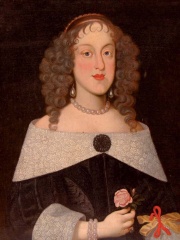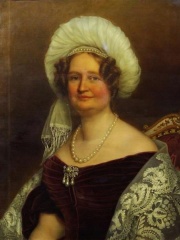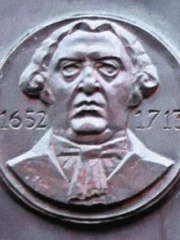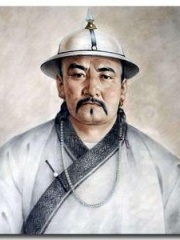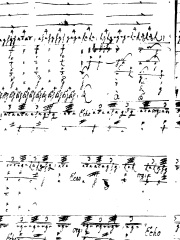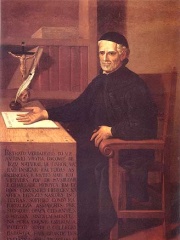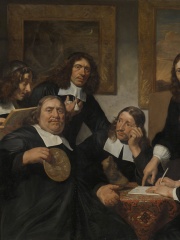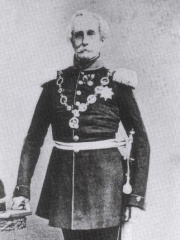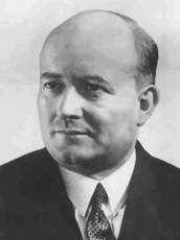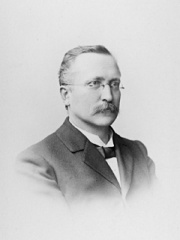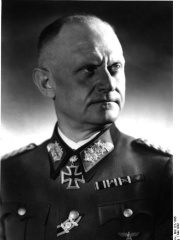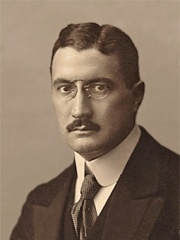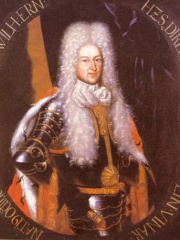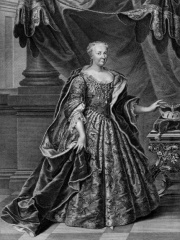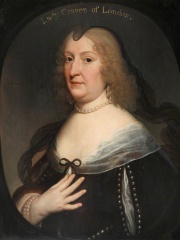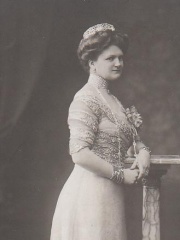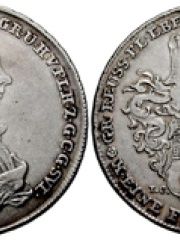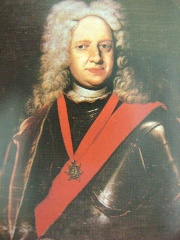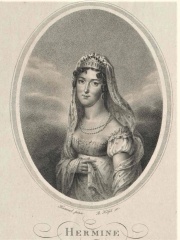NOBLEMAN
Frederick Charles, Duke of Württemberg-Winnental
1652 - 1697
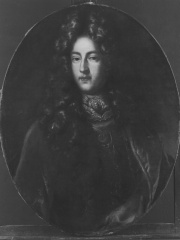
 Frederick Charles, Duke of Württemberg-Winnental
Frederick Charles, Duke of Württemberg-Winnental
Frederick Charles of Württemberg-Winnental (12 September 1652 – 20 December 1697) was since 1677 Duke of the new-founded line of Württemberg-Winnental and regent of the infant Duke Eberhard Ludwig. Read more on Wikipedia
His biography is available in 18 different languages on Wikipedia. Frederick Charles, Duke of Württemberg-Winnental is the 787th most popular nobleman (down from 687th in 2024), the 2,789th most popular biography from Germany (down from 2,589th in 2019) and the 163rd most popular German Nobleman.
Memorability Metrics
Page views of Frederick Charles, Duke of Württemberg-Winnental by language
Among NOBLEMEN
Among noblemen, Frederick Charles, Duke of Württemberg-Winnental ranks 787 out of 1,415. Before him are Princess Antoinette of Saxe-Coburg-Saalfeld, Antoinette de Mérode, François de Vendôme, duc de Beaufort, Nitocris of Babylon, Prince Igor Constantinovich of Russia, and Archduchess Isabella Clara of Austria. After him are Geoffrey I, Count of Anjou, Bertrada of Prüm, Princess Maria Augusta of Saxony, Conrad I, Duke of Swabia, Archduchess Marie Astrid of Austria, and Corbinian.
Most Popular Noblemen in Wikipedia
Go to all RankingsPrincess Antoinette of Saxe-Coburg-Saalfeld
1779 - 1824
HPI: 61.44
Rank: 781
Antoinette de Mérode
1828 - 1864
HPI: 61.44
Rank: 782
François de Vendôme, duc de Beaufort
1616 - 1669
HPI: 61.44
Rank: 783
Nitocris of Babylon
550 BC - 550 BC
HPI: 61.43
Rank: 784
Prince Igor Constantinovich of Russia
1894 - 1918
HPI: 61.43
Rank: 785
Archduchess Isabella Clara of Austria
1629 - 1685
HPI: 61.40
Rank: 786
Frederick Charles, Duke of Württemberg-Winnental
1652 - 1697
HPI: 61.39
Rank: 787
Geoffrey I, Count of Anjou
1000 - 987
HPI: 61.39
Rank: 788
Bertrada of Prüm
670 - 704
HPI: 61.39
Rank: 789
Princess Maria Augusta of Saxony
1782 - 1863
HPI: 61.39
Rank: 790
Conrad I, Duke of Swabia
915 - 997
HPI: 61.38
Rank: 791
Archduchess Marie Astrid of Austria
1954 - Present
HPI: 61.37
Rank: 792
Corbinian
670 - 730
HPI: 61.36
Rank: 793
Contemporaries
Among people born in 1652, Frederick Charles, Duke of Württemberg-Winnental ranks 10. Before him are Ferdinando Carlo Gonzaga, Duke of Mantua and Montferrat, Camille d'Hostun, duc de Tallard, Boris Sheremetev, Charles, Prince of Anhalt-Zerbst, Cornelis de Bruijn, and Benedicta Henrietta of the Palatinate. After him are Thomas Otway, Johann Ernst Glück, Magdalena Sibylla of Hesse-Darmstadt, Pavao Ritter Vitezović, Jan Brokoff, and Nahum Tate. Among people deceased in 1697, Frederick Charles, Duke of Württemberg-Winnental ranks 8. Before him are Charles XI of Sweden, Eleanor of Austria, Queen of Poland, Galdan Boshugtu Khan, Nicolaus Bruhns, António Vieira, and Gregorio Barbarigo. After him are John Aubrey, Georg Mohr, Libéral Bruant, Niels Juel, Filippo Baldinucci, and Jan de Bray.
Others Born in 1652
Go to all RankingsFerdinando Carlo Gonzaga, Duke of Mantua and Montferrat
POLITICIAN
1652 - 1708
HPI: 64.39
Rank: 4
Camille d'Hostun, duc de Tallard
POLITICIAN
1652 - 1728
HPI: 64.28
Rank: 5
Boris Sheremetev
MILITARY PERSONNEL
1652 - 1719
HPI: 63.90
Rank: 6
Charles, Prince of Anhalt-Zerbst
NOBLEMAN
1652 - 1718
HPI: 62.05
Rank: 7
Cornelis de Bruijn
WRITER
1652 - 1727
HPI: 61.67
Rank: 8
Benedicta Henrietta of the Palatinate
COMPANION
1652 - 1730
HPI: 61.52
Rank: 9
Frederick Charles, Duke of Württemberg-Winnental
NOBLEMAN
1652 - 1697
HPI: 61.39
Rank: 10
Thomas Otway
WRITER
1652 - 1685
HPI: 60.93
Rank: 11
Johann Ernst Glück
WRITER
1652 - 1705
HPI: 59.62
Rank: 12
Magdalena Sibylla of Hesse-Darmstadt
NOBLEMAN
1652 - 1712
HPI: 59.57
Rank: 13
Pavao Ritter Vitezović
WRITER
1652 - 1713
HPI: 59.23
Rank: 14
Jan Brokoff
SCULPTOR
1652 - 1718
HPI: 58.70
Rank: 15
Nahum Tate
WRITER
1652 - 1715
HPI: 53.78
Rank: 16
Others Deceased in 1697
Go to all RankingsCharles XI of Sweden
POLITICIAN
1655 - 1697
HPI: 73.44
Rank: 2
Eleanor of Austria, Queen of Poland
COMPANION
1653 - 1697
HPI: 70.92
Rank: 3
Galdan Boshugtu Khan
MILITARY PERSONNEL
1644 - 1697
HPI: 66.23
Rank: 4
Nicolaus Bruhns
COMPOSER
1665 - 1697
HPI: 65.16
Rank: 5
António Vieira
WRITER
1608 - 1697
HPI: 61.77
Rank: 6
Gregorio Barbarigo
RELIGIOUS FIGURE
1625 - 1697
HPI: 61.44
Rank: 7
Frederick Charles, Duke of Württemberg-Winnental
NOBLEMAN
1652 - 1697
HPI: 61.39
Rank: 8
John Aubrey
WRITER
1626 - 1697
HPI: 60.33
Rank: 9
Georg Mohr
MATHEMATICIAN
1640 - 1697
HPI: 59.27
Rank: 10
Libéral Bruant
ARCHITECT
1636 - 1697
HPI: 59.24
Rank: 11
Niels Juel
MILITARY PERSONNEL
1629 - 1697
HPI: 59.09
Rank: 12
Filippo Baldinucci
HISTORIAN
1625 - 1697
HPI: 59.04
Rank: 13
Jan de Bray
PAINTER
1627 - 1697
HPI: 58.99
Rank: 14
In Germany
Among people born in Germany, Frederick Charles, Duke of Württemberg-Winnental ranks 2,790 out of 7,253. Before him are Friedrich Spee (1591), Leopold IV, Duke of Anhalt (1794), Stanisław Mikołajczyk (1901), Walter Heitler (1904), Wilhelm Roux (1850), and Alfred Wünnenberg (1891). After him are Luigi Colani (1928), Hans von Marées (1837), Princess Maria Augusta of Saxony (1782), Michael Rummenigge (1964), Franz Joseph Emil Fischer (1877), and Martin Walser (1927).
Others born in Germany
Go to all RankingsFriedrich Spee
WRITER
1591 - 1635
HPI: 61.41
Rank: 2,784
Leopold IV, Duke of Anhalt
POLITICIAN
1794 - 1871
HPI: 61.40
Rank: 2,785
Stanisław Mikołajczyk
POLITICIAN
1901 - 1966
HPI: 61.40
Rank: 2,786
Walter Heitler
PHYSICIST
1904 - 1981
HPI: 61.40
Rank: 2,787
Wilhelm Roux
BIOLOGIST
1850 - 1924
HPI: 61.40
Rank: 2,788
Alfred Wünnenberg
MILITARY PERSONNEL
1891 - 1963
HPI: 61.39
Rank: 2,789
Frederick Charles, Duke of Württemberg-Winnental
NOBLEMAN
1652 - 1697
HPI: 61.39
Rank: 2,790
Luigi Colani
DESIGNER
1928 - 2019
HPI: 61.39
Rank: 2,791
Hans von Marées
PAINTER
1837 - 1887
HPI: 61.39
Rank: 2,792
Princess Maria Augusta of Saxony
NOBLEMAN
1782 - 1863
HPI: 61.39
Rank: 2,793
Michael Rummenigge
SOCCER PLAYER
1964 - Present
HPI: 61.39
Rank: 2,794
Franz Joseph Emil Fischer
CHEMIST
1877 - 1947
HPI: 61.38
Rank: 2,795
Martin Walser
WRITER
1927 - 2023
HPI: 61.37
Rank: 2,796
Among NOBLEMEN In Germany
Among noblemen born in Germany, Frederick Charles, Duke of Württemberg-Winnental ranks 163. Before him are William Ernest, Duke of Saxe-Weimar (1662), Princess Magdalena Augusta of Anhalt-Zerbst (1679), Charlotte von Stein (1742), Johann Leopold, Hereditary Prince of Saxe-Coburg and Gotha (1906), Countess Amalie Elisabeth of Hanau-Münzenberg (1602), and Princess Antoinette of Saxe-Coburg-Saalfeld (1779). After him are Princess Maria Augusta of Saxony (1782), Augustus the Elder, Duke of Brunswick-Lüneburg (1568), Princess Eleonore of Solms-Hohensolms-Lich (1871), Heinrich XXIV, Count Reuss of Ebersdorf (1724), Friedrich Wilhelm, Duke of Saxe-Meiningen (1679), and Princess Hermine of Anhalt-Bernburg-Schaumburg-Hoym (1797).
William Ernest, Duke of Saxe-Weimar
1662 - 1728
HPI: 61.63
Rank: 157
Princess Magdalena Augusta of Anhalt-Zerbst
1679 - 1740
HPI: 61.61
Rank: 158
Charlotte von Stein
1742 - 1827
HPI: 61.60
Rank: 159
Johann Leopold, Hereditary Prince of Saxe-Coburg and Gotha
1906 - 1972
HPI: 61.52
Rank: 160
Countess Amalie Elisabeth of Hanau-Münzenberg
1602 - 1651
HPI: 61.46
Rank: 161
Princess Antoinette of Saxe-Coburg-Saalfeld
1779 - 1824
HPI: 61.44
Rank: 162
Frederick Charles, Duke of Württemberg-Winnental
1652 - 1697
HPI: 61.39
Rank: 163
Princess Maria Augusta of Saxony
1782 - 1863
HPI: 61.39
Rank: 164
Augustus the Elder, Duke of Brunswick-Lüneburg
1568 - 1636
HPI: 61.35
Rank: 165
Princess Eleonore of Solms-Hohensolms-Lich
1871 - 1937
HPI: 61.33
Rank: 166
Heinrich XXIV, Count Reuss of Ebersdorf
1724 - 1779
HPI: 61.24
Rank: 167
Friedrich Wilhelm, Duke of Saxe-Meiningen
1679 - 1746
HPI: 61.22
Rank: 168
Princess Hermine of Anhalt-Bernburg-Schaumburg-Hoym
1797 - 1817
HPI: 61.08
Rank: 169





